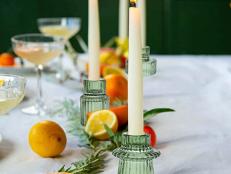Grow Licorice Plant

Courtesy of ProvenWinners
You can't eat Helichrysum petiolare, but licorice plants, as they're also known, are ideal for adding interest to containers, window boxes or garden beds. Low-growing varieties can be used as ground covers or planted on slopes and banks to help control soil erosion.
Botanically speaking, licorice plants are herbaceous shrubs, native to southern Africa, but because they're hardy only in zones 9 to 10 or 11, they're usually treated as annuals. They get their common name from the licorice scent that some gardeners notice on warm summer days.
These easy-to-grow plants with woolly, downy or felted leaves tolerate poor soil and thrive in part sun to sun, although gardeners in hot summer climates may need to give them some afternoon shade. Their foliage, which ranges from silver to grayish green, or from yellow-green to variegated colors, is usually at its best in full sun. Licorice plants take average water, but can tolerate drought and heat once they're established. Deer usually leave them alone.
With their neutral colors, licorice plants pair nicely with many flowers. For a "cool" palette, mix them with blues, lavenders and purple blooms, or turn up the heat by combining them with the bold, bright colors of Gerbera daises, geraniums, coleus, ornamental peppers, petunias and pentas.
Thanks to their trailing stems, licorice plants spill gracefully over walls and spread through garden beds to fill in between other plants. They don't require pruning but can be pinched back if their stems get too long, and they seldom need fertilizing. H. petiolare has small and insignificant flowers; some gardeners snip them off after blooming, to keep the plants looking neat and tidy.
If you want to grow licorice plants from seeds, sow the seeds indoors six to eight weeks before the last spring frost, and wait until all chance of frost has passed before transplanting the seedlings into the garden. To overwinter them, dig the plants before the first fall frost, or take cuttings to set out the following year.
Popular licorice plants to try:
- 'Licorice Splash' - This drought tolerant variety has variegated leaves of gray-green to yellow-green. It needs part sun to sun and has a bushy, compact growth habit. Expect it to reach 8 to 12 inches tall.
- 'Silver Mist' - With its small, soft, silvery-white foliage, this plant can be used as an annual groundcover in areas that get full sun. It tops out at 6 to 8 inches high and spreads up to 2 feet. Its multi-branched stems rarely need pinching. If sowing from seed, start your seeds indoors, 3 months before the last spring frost in your area.
- 'White Licorice' - A good choice for containers, these vigorously growing plants have silver foliage that reaches 10 inches high with an 8 to 10 inch spread.
- 'Icicles' (H. thianschanicum) - Narrow, needle-like, silvery foliage distinguishes this licorice plant. Small yellow flowers attract bees and butterflies. Use 'Icicles' in full to partial sun; it's especially nice for rock gardens. This mounding plant grows 1 to 2 feet high and wide, so it's better used as a filler than a spiller (a trailing plant).
- 'Lemon Licorice' - Suitable for partial shade in hot climates, this plant hugs the ground and spreads as much as 2 feet across. Soft, new leaves start out silver and turn chartreuse green. 'Lemon Licorice' grows well even in urban areas with air pollution.












































